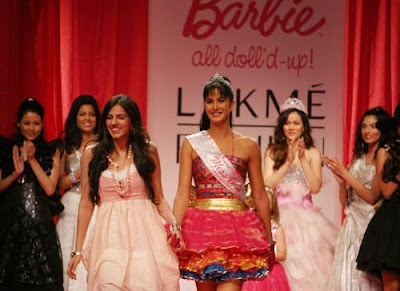Most people claim that they don't stereotype a brand, yet they always know what to expect in a 'Pink Panther' flick or how exactly does a 'Pears' soap smell. A wee-bit ironical!
I don't particularly hold brand stereotyping as a negative. Indeed, it enables the target audience (or consumers) to associate the brand with something pleasant or desirable (atleast the intent is such), thereby helping them to either identify with it or aspire for it. So, in theory, a positive brand image should ideally run a consumer through the entire brand cycle of awareness > association > consideration > experience > preference > loyalty, giving birth to three more fancy terms in the marketing jargon - Brand Association, Brand Perception and Brand Image! Let me explain each of these three terms, taking Kingfisher as an example.

(I will list down whatever comes to my mind with regard to the brand’s manner, personality, behavior, ethics, values, aspirations, etc! Readers are welcome to add.)
Brand Association: Kingfisher Calendar, Royal Challengers, Vijay Mallaya, Yana Gupta, October Fest, Red, Short Skirts
Brand Perception: Flamboyant, Sexy, Expensive
Brand Image: An up-market air carrier with good hospitality - one of the best on- board comforts, in-flight entertainment systems, airline crew in India
So in Kingfisher's case, the brand stereotyping does work well, atleast with me, by building a positive brand association, perception and image in my mind.

The cons of stereotyping, however, can be equally detrimental. For example, I would any day
choose any decently-known bathing soap over Lifebouy, because my childhood memories compel me to still associate the brand with a fuchsia pink soap with a detestable odor. Wonder how much has the improved product and the new ads with fancy models helped change the target audience's perception. And I say target audience, not consumer, because the brand would aim at an aggressive conversion of its prospects (who fall in the broader 'target audience' group) to customers, while safely assuming that the existing customers have a satisfactory experience with the brand. (Albeit at the same time, I am sure that the fuchsia pink Lifebuoy does have a good consumer base, just as ‘Ghari’, the most profitable detergent in Uttar-Pradesh with a robust and loyal pool of customers.)
So, to sum it up, it’s a win-lose deal. You win if you can form the right Brand Image, complement it with your product or services, and hence sustain it. Once you have done that, you are sure to capture more customers and expand your base even within your target segment. However, the problem arises if you go amiss or decide, at any given point, say maybe even 10-15 years later, to start afresh or in the marketing lingo, to affect a makeover. This would mean that you dissociate yourself with your past and present, by fighting a battle in the minds of the consumers, and form new perceptions, associations and image. A task which involves planning and scheming by some astute brand pundits and marketers, and typically takes a long time, costs a bomb, and has the calculated risk of being unsuccessful.

But then of-course, there have been successful 'makeovers' where a brand changes everything about itself in a bid to change its image or the perception of its target audience. Lakme perhaps would be an apt example! It has taken a huge leap from being traditionally housewife-ish to being trendily housewife-ish. Some of the prime ingredients that have gone into the makeover: revamp of products and their packaging, sexy brand ambassadors (started with Yana, and Katrina now), aggressive advertising post celebrity endorsement and Lakme India Fashion Week.
The change has been reflected in the brand's collection, essentially the color palette, which is now localized to suit the Indian complexion and taste. (I couldn't find 'sindoor' for my wedding ceremony anywhere else but at Lakme. FYI, Lakme markets 'sindoor' in shades of red, maroon, gold and copper). The new packaging ensures visibility on the shelf, and compact-ibility for ease of carry-ability. Its distribution network covers local departmental stores as well as malls in most metros, mini-metros and sub-urban areas. I believe, another reason why Lakme has been successful at the makeover is because they have made corresponding changes to its offerings in sync with the brand's new visual identity, associations and image - something which many companies fail to realize. To top it all, Lakme also has a slight price advantage when compared with the other cosmetic brands in the segment.
Lakme extended this success story when a new chapter began for the brand with the inception of Lakme Salons, and now the high-profile Lakme Studios. It is very interesting to note how their salon services are not only premuimly positioned and targeting a higher strata of consumers than its cosmetic products, but also premiumly priced. Of-course they have the first mover's advantage in the 'salon space', being one of the many organized players in the segment.
The makeover makes for an interesting case study although I will not vouch for the fact that the other brands can replicate their success because like I said, it involves a lot and costs even more. HLL is a giant in India and Lakme is their backbone, and I believe their investment was justified from a ROI point of view for them. Godrej has attempted one such makeover, and so has PNB (Punjab National Bank), as also other known and lesser known brands, but they don't really account for success stories. And I can assume that some of them are in business due to their sales team, and not really the marketing.
- Namrta R
PS: Thanks for your feedback Jas!



